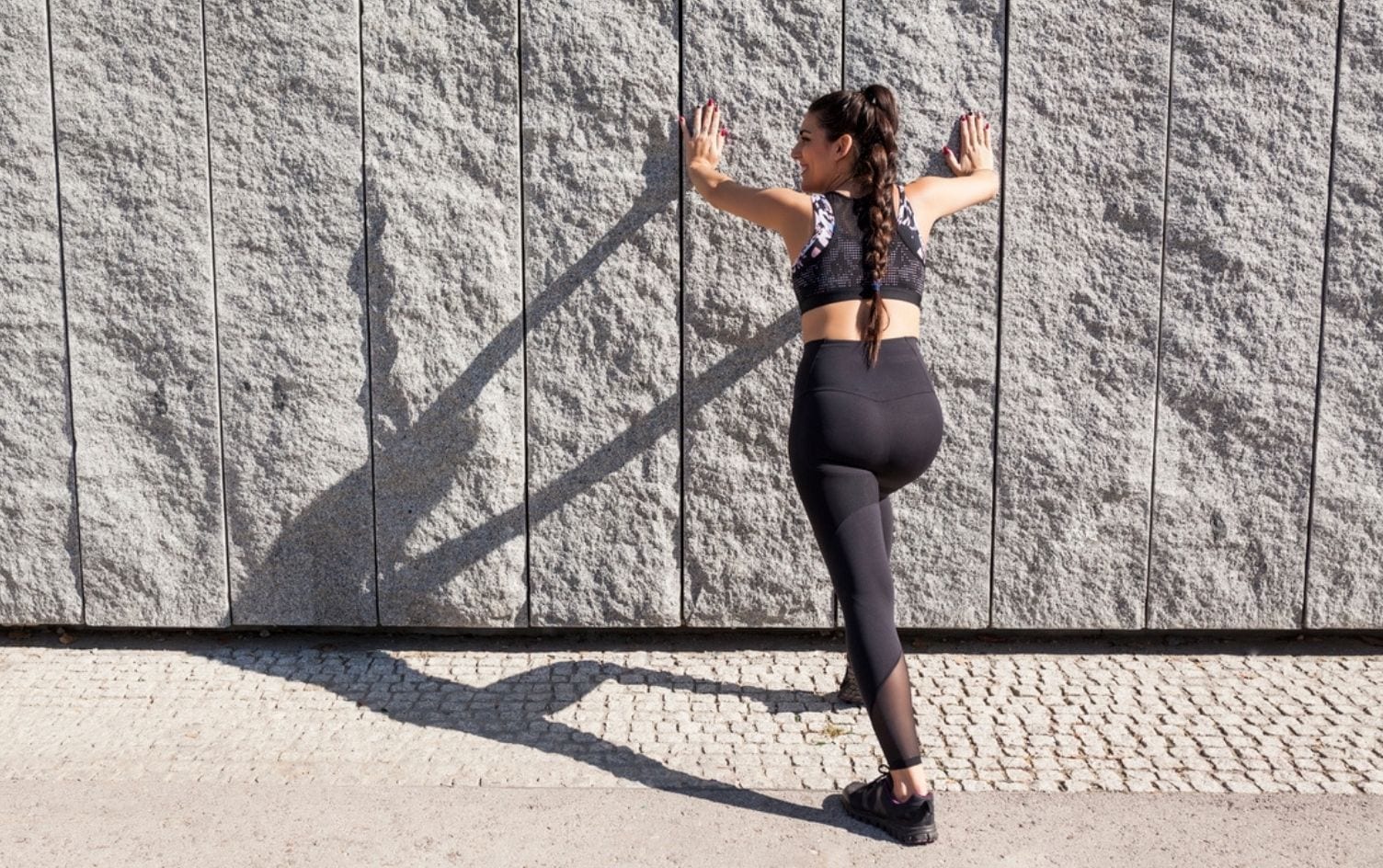After a walk, you may not feel like you need to stretch — especially if walking feels easy and natural for you — but taking a few minutes to focus on foot, ankle and hip mobility can have major benefits. Not only are you helping speed up recovery and reducing the risk of injury as you progress your walks and add more variable terrain and elevation, but you also benefit from simply spending a few extra minutes doing some dynamic stretching that can double as a form of bodyweight strength training for some movements.
FROM SITTING TO WALKING
Physiotherapist and avid runner Jenn Tadashore says that for most people, walking is the one break from sitting that they get all day, and because of this, tight hips and even poor ankle mobility can be problematic. Taking time to give your hips some love can be critical to overall health and comfort, and the same even applies to the upper body.
“Getting used to doing a few minutes of stretching after a walk is a great way to ensure that you’re actually getting some stretching in throughout the day,” she says. “This is super important if you spend most of the day sitting and looking down at your laptop or your smartphone or looking up at the television. Even using this time to stretch out your upper body can set you up for a better day. If we’re working on mobility regularly, that helps us to have as full a range of motion as possible.”
POST-WALK TIPS
Start with targeting anything that feels stiff when you get done with your walk. Tadashore recommends doing some ankle stretches to stretch out your calves to get started since many people feel some tightness there.
Ankle stretches: Stand facing a wall and step one foot a couple of inches away from the wall, the other foot a step back from that. Brace your hands against the wall if you need the support, and begin to bend your front knee, allowing your kneecap to come over your foot and toward the wall, keeping both heels on the ground. Stop when you feel a good stretch: Don’t overdo it and push beyond your comfort zone! You’ll feel a stretch in your calf and your shin. Hold for 15 seconds, then repeat on the other foot.
Walking lunges: This is Tadashore’s favorite stretch for hip flexors and for sneaking in some stealth strength training. Simply walk forward while lunging: Take a big step, and then allow your front knee to bend to 90 degrees while the back knee drops toward the ground. Focus on maintaining good core control as you do this, and you’ll get some bonus ab work as well! As you’re down in the lunging position, you may want to even pause for a few seconds and lean a bit forward and back to work into your hip flexors. You should feel a good stretch, but again, pay attention to how you feel, and only go deep enough in the lunge to feel a stretch, not pain. Do 10 walking lunges per side.
UPPER BODY MOBILITY
While you’re stretching, take some time to stretch your upper body as well, especially your upper back. A hunched back while working can lead to tight hip flexors while walking, Tadashore warns. “If we can’t open up in our upper body, we’re going to be fighting through different areas below that, and different tissues are going to absorb that,” she says.
“The importance of strengthening and working on mobility through our upper back is very important,” she explains. “We need to be solid from our shoulders to our hips — that comes from our core strength, our postural abilities and our mobility through our thoracic spine — or we’ll have a hard time opening everything up to walk well.”
You can help correct this with some simple yoga stretches, doing a series of cat/cow poses on your hands and knees (allowing your hips, chest and chin to drop for cat pose, then bringing them back up while letting the belly drop for cow) or holding a downward dog pose for 20 seconds (starting from a high plank position and lifting your butt up toward where the wall and ceiling meet behind you, maintaining a straight line from your wrists to your butt).
You can also make sure that you’re stretching throughout the rest of your workday, Tadashore says. “If you sit for work, set an alarm so that every half an hour, you’re reminded to stand up, do whatever stretch feels good, maybe walk to get a glass of water, then sit back down. Change the load that you’re putting on your body: We aren’t made to sit for long periods of time. If you can change it up so that you’ve got a sit/stand desk, that’s great, but just moving more throughout the day will make a huge difference.”
Check out “Workout Routines” in the MyFitnessPal app to discover and log workouts or build your own with exercises that fit your goals.




